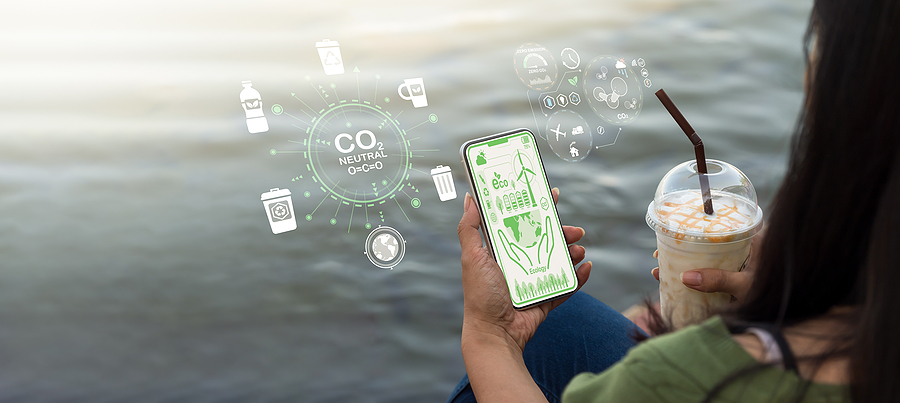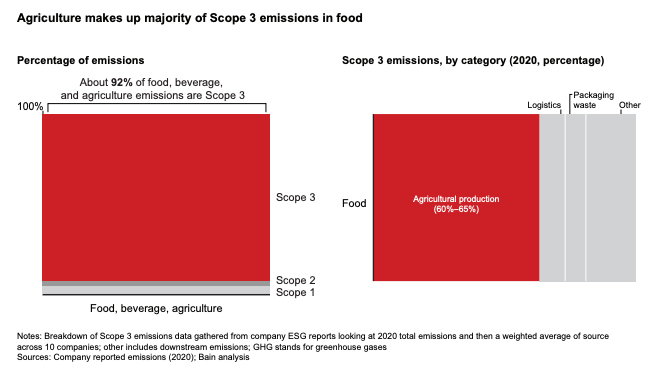
2024 Trend Forecast: Consumers Seek Truth Amplified by Transparency
January 4th, 2024 Posted by Emergent brand marketing, brand messaging, brand strategy, branded content, Consumer trends, Healthy Living, Higher Purpose, Insight, storytelling, Strategic Planning 0 comments on “2024 Trend Forecast: Consumers Seek Truth Amplified by Transparency”Artifice falls away, replaced by a tour behind the product creation curtain…
Much of what unfolded in 2023 has laid down a runway for how your strategy should evolve in 2024. Over the last year we’ve seen a distinct rise of consumer uncertainty, a decline in feelings of control and increasing uneasiness over extraordinary climate change impacts, a chaotic political environment, see-saw inflation, raging wars and other forms of personal and societal disruption.
- According to Kantar, 43% of Americans experienced mild to severe anxiety, up from 26% a year earlier, while half of millennials now rank their mental health as part of their well-being they are most concerned about.
It has authored a distinct premium on the desire for authenticity, truth, honesty, values, belief – all of which, incidentally, are desirable human traits. So how should brands respond in an environment where consumers crave honest, respectful relationships between themselves and the brands they care about? By adopting more human-like qualities and behaviors.
- In a recent story on viral engagement at Fast Company, Clinique Global VP of consumer engagement Lucy Burns said, “Gen Z can smell ads a mile away. They are the first generation that really wants brands and creators to authentically speak to them. And what does that mean? You don’t create an ad. You create content that they would want to engage with.”
This will be the year of yearning for discernment of the real and true while working to avoid the artificial and questionable. As reported earlier this year in the Emerging Trends Report, consumers have turned inward to themselves for guidance. Why? People have become increasingly skeptical and wary of less credible independent sources and therefore what they perceive to be unreliable and not-so faithful recommendations about products and services.
- Key insight: Further probing on this condition, we find consumers moving to seek a deeper level of discovery and understanding about the products they care about.
Know more, want more granular info
Emergent has been crunching the consumer insight research reports and studies, as we lean into our predictions for where CPG food, beverage and retail marketing is headed in 2024. The overriding theme and guidance for the coming year is an advancing consumer interest in securing more details about how products are created, manufactured and what’s inside them.
- In short both retail and CPG marketers will have a lot of explaining to do as consumers demand truth and transparency from the brands that matter to them.
What this means: consumers want to understand what the food and beverages they ingest consist of. They want their expectations to be fulfilled and this requires brands to take consumers behind the curtain and reveal more substantive details about formulation, ingredient sourcing and production methods.
Truth: consider the credibility of the content source and how the story is packaged
Transparency: take them behind the scenes to see how you do what you do
Here are six specific food/bev industry trends that remain common across generational audience segments:
- Less Processed
Consumers do not believe that ultra-processed is a positive attribute. Brands with ultra-processed products should consider investing R&D energy to create less processed versions of products, with simpler labels and emphasis on the nutritional density of ingredients used. Plant-based brands should bear in mind this applies to how products are created and presented. Plant-based used to automatically convey an item is better for you. Not so much now. Some plant-based categories are seen as overly processed. Consumers know more, so Show Me is the operative behavior in brand communications.
2. Upcycled
We’re seeing a growing interest in upcycled ingredients used in product creation. Consumers perceive this as less wasteful and more sustainable. Plus, it’s a great story to tell in product creation narratives.
3. Sustainable
Consumer attitudes on sustainability has shifted due to greater knowledge and understanding of the environmental impact of our food system. It is no longer just the use of recyclable packaging, efficient energy sources and water management. Consumers have connected the dots between supply chain and emissions performance. They want to know what brands and retailers are doing to advance policies and standards related to regenerative agriculture and use of less carbon-intensive ingredients.
4. Nutritional Density
Consumers believe there is a connection between what they eat and their overall quality of life and health. Alongside the redefinition of what aging looks like and how lives can transform over time based on taking better care of yourself, brands can position themselves squarely in the bulls-eye of lifestyle partnership. This is accomplished by delivering products that provide functional ingredients designed to enhance delivery of vitamins, minerals, proteins without added sugars, the wrong kinds of fats and high sodium content.
5. Energy Reduction Plays
Previously, refrigeration translated to fresher, higher quality. That said, consumers increasingly see these as a hidden cost tradeoff to the planet on energy use. Development of more shelf stable versions of products will enable brands to talk about ways they are helping reduce energy signatures in how their products are distributed and merchandized in-store.
6. Disguising Fruit and Veg
Lingering in the back of consumers’ minds is a fundamental consideration that more fruit and veg in the diet is a good thing. How those better-for-you servings are acquired and consumed presents an opportunity for brands. How can you bring the nutritional benefits of these ingredients in a form consumers will find simple, easy and delicious to consume? Some smoothie beverage brands are great at this.
2024’s megatrend – healthy living, aging and self-care
People believe that what they consume has a direct relationship to the quality of their lives. This impacts health, wellness and helps answer their desire to slow down or even reverse the effects of aging. How can you partner with consumers on their healthy living journey? How can your brand proceed as guide and coach on helping them realize their goals and ambitions? Think of your brand as a true, reliable friend. What would a real friend do to help?
Tactics: what’s behind the thirst for information?
Consumers want to know more about how you create your products and what’s inside them because it helps re-establish their sense of control and ability to create customized solutions for themselves. With so much environmental noise causing people to believe they are losing control, giving it back to them is vital in your relationship. More information puts them in the driver’s seat while you supply the grist for their own lifestyle consideration. This should be reflected in your content creation plans.
Primacy of emotion, best served
As we’ve said before, decisions and actions originate in the limbic area of the brain, and our subconscious (dictates actions we take) is heavily influenced through emotion. This is best seen by emphasizing the joy of cooking alongside the joy of eating and drinking – no matter the category, this rule remains true: celebrate the experiences of cooking, consuming and their related social interaction benefits.
Emergent’s role refined for 2024
We believe that strong brands win so we’re obligated to help strengthen client brands by driving towards greater uniqueness and differentiation. Well-positioned brands say and do things differently than others in their category. They bring a different tone, see the future differently and have a clear point of view.
Our role: to help clients refine and package how they show up in the world. To that end, we work to build brand reputations, credibility, belief and transcendence. We believe the foundation for this work lies in refinement of brand purpose, deeper meaning and values. We know that conveying your brand’s “why” – its true purpose – is a more effective tool to win hearts and minds than the typical feature/benefit story. People are irresistibly drawn to brands that share a vision and reason for being they believe in. We connect this story to the brand users through stories – content and earned media.
Final guidance for 2024
Brand optimism. Through all of the doomer conditions people are confronted with on a daily basis, smart brands can be a safe harbor for an optimistic outlook based on progress and personal fulfillment. Your brand’s role as coach, guide and enabler can help people envision a better, brighter and more meaningful future.
If these observations and possibilities strike a chord for honing your 2024 plans, use this link to start an informal conversation about your questions and concerns.
Looking for more food for thought? Subscribe to the Emerging Trends Report.
Bob Wheatley is the CEO of Chicago-based Emergent, The Healthy Living Agency. Traditional brand marketing often sidesteps more human qualities that can help consumers form an emotional bond. Yet brands yearn for authentic engagement, trust and a lasting relationship with their customers. Emergent helps brands erase ineffective self-promotion and replace it with clarity, honesty and deeper meaning in their customer relationships and communication. For more information, contact [email protected] and follow on Twitter @BobWheatley.





